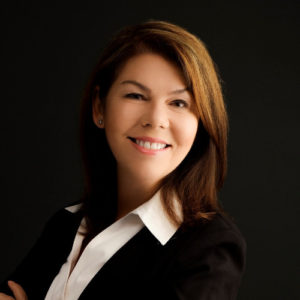Or listen in your favorite podcast app
Apple Podcasts / Google Podcasts / Spotify
Mary Beth Westmoreland always knew she’d land a job in technology— her love for math and science inspired her too much for her not to end up in the field. What she didn’t know is that she’d become one of the most influential and passionate leaders in the technology space. Mary Beth is the CTO of Blackbaud, and she joined IT Visionaries to discuss how she is helping drive change and innovation in the technology space. Plus, she shares why working with social good organizations to provide them with the proper technology excites her every day.
Key Takeaways
- Nonprofits deserve to be treated the same as any Fortune 500 company.
- Diverse groups and teams deliver better and more efficient solutions.
- Employees who understand the customers’ issues and sympathize with that issue can solve their solutions more efficiently.
For an in-depth look at this episode, continue below.
Mary Beth Westmoreland always knew she’d land a job in technology— her love for math and science inspired her too much for her not to end up in the field. What she didn’t know is that she’d become one of the most influential and passionate leaders in the technology space. Westmoreland sat down with IT Visionaries to discuss her role as Chief Technology Officer at Blackbaud, the role Blackbaud is playing in helping get technology into the hands of nonprofits, the need to continue to push the boundaries of innovation, and why diverse teams help find the best solutions.
As CTO of Blackbaud— a leader in cloud software development for nonprofits— Westmoreland’s responsibilities center on Blackbaud’s product, data and analytics strategies. Including Blackbaud labs, an incubation team formed to develop disruptive solutions that their customers can use to solve problems.
“As technologists, we don’t make robots,” she said. “It’s the people who we have here who understand our customer’s needs and are passionate about that and are creative and highly skilled themselves who are developing the solutions. This is not a manufacturing organization, it’s a technology company.”
For Westmoreland, that distinction helps guide her mission of assisting nonprofits through their digital transformation, starting with nonprofits’ need to be able to understand how their technology is working for them.
“Our goal is to make sure that our customers are able to gain resources to be able to divert more time, and quite honestly, more dollars and resources to their missions,” Westmoreland said. “And that’s what we’re solely focused on. I have a very strong desire to take the best of what is available in technology and provide it back to the nonprofits. Nonprofits are as deserving of the best that tech has to offer anyone else.”
To help deliver those assets to nonprofits, Blackbaud has invested heavily in understanding how those organizations deploy their employees and what tasks they are doing in order to make sure their coverage is both efficient and optimal.
“We have to be very careful about being good custodians of our customers and their donors’ data, and that we keep it secure,” Westmoreland said. “But we’re also leveraging it to do more good. We take that very seriously about what data we have, how we use it, how we protect it. We lock it down.”
So how is Blackbaud protecting that data? Westmoreland says the focus is on their research and development center of excellence, where her team works to remove items such as duplicate records, who potential donors and prospects might be, and which individuals are likely to give to nonprofits. The key to all these things working properly is that the applications must be simple.
“We put risk and compliance at the forefront of everything we do,” Westmoreland said. “One of the mainstays of the cloud is that our customers don’t have to install, maintain, update, and lock down their software. We do that for them. The second is that we can help them with their data assets, leveraging it to be able to do things like understanding benchmarks and best practices, and completing addresses.”
So how is Blackbaud working to deliver new and revolutionary products to its customers? Through innovation and empowering their employees to work through solutions. But to do this, Westmoreland states you need to have associates and employees who are passionate in all areas, including understanding the client.
“Innovation doesn’t happen in one spot of the company, it happens everywhere,” Westmoreland said. “[If] you have an employee that understands the customer problems, you give them the power to solve the problem. You don’t tell them how to solve it. You describe the problem and you give them access to seeing the problem, but then you support them in their quest to try stuff to see what is going to solve the problem the best. And I think that that leads to a lot of innovation.”
In that same vein, Westmoreland is a big proponent of diversity and diverse teams’ abilities to develop more solutions and better perspectives at an efficient pace. To do this, Blackbaud has partnered with various universities and technology groups in the South Carolina area to help develop the next generation of technology leaders. It’s something that Westmoreland takes very seriously.
“For someone like me who really didn’t have a strong strong female role model, I feel like it’s my legacy,” Westmoreland said. “My job is to develop, mentor, open up doors for the next generation of diverse leaders. Whether that be a woman or someone of other diverse backgrounds. I take it really seriously, and I feel really fortunate to work for a company that also takes this seriously.”
With the evolution of technology and its ability to help customers solve more problems in more efficient manners, Westmoreland remains excited about the future of the industry and feels fortunate to be a part of it.
“We’re thinking about all of this tech and how it can be applied and what it should be applied to,” she said. “It’s real customer problems. But for me, this is like the best time to live. We’re in the fourth industrial revolution, on the tails of it. It’s amazing to see the change.”




